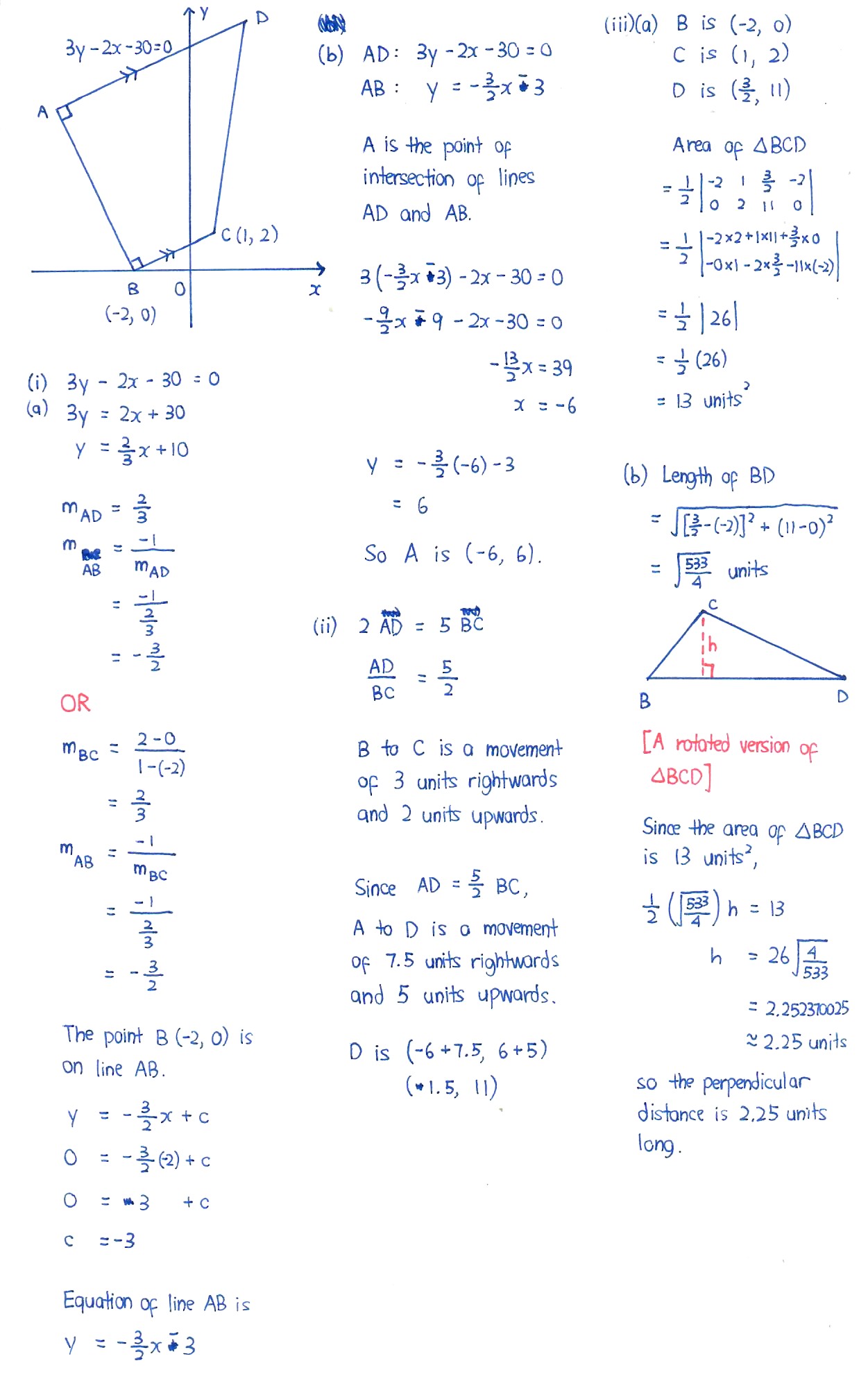Eric Nicholas K's answer to chocolatebanana's Secondary 4 A Maths Singapore question.
done
{{ upvoteCount }} Upvotes
clear
{{ downvoteCount * -1 }} Downvotes
Chocolatebanana, here are my workings. I used a word explanation to solve part (b) (ii).
Date Posted:
4 years ago
ii) utilises the idea of similar triangles. Try drawing two right angled triangles with AD and BC as the hypotenuses. You'll see that the vertical and horizontal sides are proportional.
iii a)
Alternative working for area of BCD :
Area = ½ x base x height
= ½ x BC x AB
(AB is the perpendicular height)
= ½ x √( (-2 - 1)² + (0 - 2)² ) x √( (-2 - (-6) )² + (0 - 6)²)
= ½ x √13 x √52
= 13
iii a)
Alternative working for area of BCD :
Area = ½ x base x height
= ½ x BC x AB
(AB is the perpendicular height)
= ½ x √( (-2 - 1)² + (0 - 2)² ) x √( (-2 - (-6) )² + (0 - 6)²)
= ½ x √13 x √52
= 13
(iii) (a) Alternative
You can draw two vertical lines, one from C and one from D, to hit the x-axis at P and Q, then draw a straight line BD, then evaluate
Area of BDQ - Area of BCP - Area of CPQD
using only horizontal lengths and vertical heights parallel to the coordinate axes.
You can draw two vertical lines, one from C and one from D, to hit the x-axis at P and Q, then draw a straight line BD, then evaluate
Area of BDQ - Area of BCP - Area of CPQD
using only horizontal lengths and vertical heights parallel to the coordinate axes.
The trapezium can also be further divided into a rectangle and another right angled triangle



